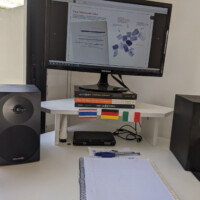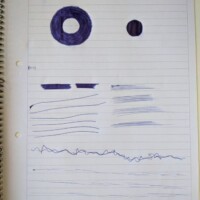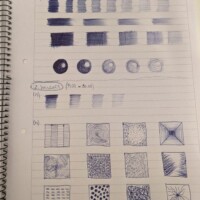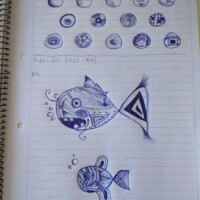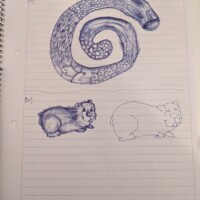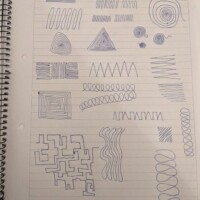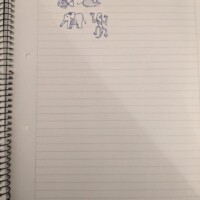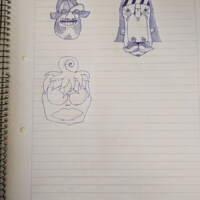For this third skill building project, I wanted to do something manual (not so intellectual). This time I chose a skill where I don’t have much previous experience. I took drawing and painting lessons as a kid, but just for a couple of years. After my teenage years, I didn’t pursue my interest beyond the beginner level. Only just three years ago, I tried my hand again at art, and it was for a month and a half.
One of my motivations to learn pen drawing in German is doing realistic portraits. Artists such as Oskar Ukonu are of great inspiration 😀. As this is just a 3-month-long project, I will be realistic… with my aspirations! Maybe it’s not possible to develop a lot of skill in such a short period of time, but I hope this experience will give me a taste of what is possible after investing time consistently in a manual skill such as this.
In the second semester of 2021, I will do two skill building projects using the German language. I studied the language for a couple of years during 2012 and 2014 and got back to it at the end of 2020. During the six-year period from 2014 to 2020, I barely read or listened to any German. Last November, when I decided to get back to it, my language skills were quite rusty (although I hadn’t forgotten everything). Now, after 8 solid months of spending daily time with German, after dozens of hours of conversations and lessons, and hundred more hours of reading and listening, I feel more confident in the language.
By doing a skill building project in German, I expect to make it even more natural for me. It’s not just the idea of reading a drawing instruction book in German: there’s more to it. It’s the willingness to use a learning material in German, being aware that -in this specific case- I’m using a resource that, most probably, I wouldn’t be otherwise using. Ideally, I would have chosen a video course instead of an e-book as the main learning resource, but I wasn’t able to find one for pen drawing. In any case, let’s take advantage of the good thing about e-books (there are so many) 🤓.
The Learning Resources
For this skill building project, I’m going to use the e-book Kuli Kunst: Kreativ mit Kunstschreiber, by Gecko Keck. There were other pen drawing e-books I considered before deciding to use this one. I chose Kuli Kunst because it seemed the most fun and interesting to me 😄. I think it would have been even better to go with the paperback copy, but the shipping times were not viable (sometimes, when ordering stuff online from abroad, I cannot even know if it’s going to arrive). For that reason, I went with the digital version.
The Materials
Besides the ebook (which I’m reading on my computer, with the Kindle reader for PCs), I’m using just a spiral pad and a couple of ballpoint pens (biros or “Kulis”, in German). In terms of materials, this has been the easiest project so far. Before starting, I considered doing Wood carving in German, but getting the right woods and tools was a real challenge. So, I ended up going to the other end of the spectrum: I chose a project with stuff I already had at home 😁.
The simplicity of learning a skill with just pen and paper was one of the things that got me into this project. I started thinking about it last February. In 2018, I completed a 45-day art project (learning how to paint with pastel pencils). Here’s an article about that project in Spanish. Other than that, during the past 20 years or so, I would say I didn’t practice any drawing. Basically, I am starting almost from scratch.
Week 1 Drawings
Below you can find the daily drawings. Each day, I’m practicing for an hour. Sometimes, I fill one or two pages. But there are days when I work on more detailed stuff, and maybe it’s just half a page 🙃. As soon as I reach the one-hour mark, I put the pen down and take the photo of the day. Click on the thumbs to see the larger pictures:
I’m really liking this method. In the beginning, you practice different shades and drawing strokes. You start with the building blocks. Then, you continue with very simple patterns and small objects. It’s nice to see how we can put together these small patterns and objects to create bigger and more complex images.
The most rewarding this week has been Day 4 (the Spiral of Elements). I enjoyed the challenge of drawing different textures, such as wood, scales, feathers, stone, bristles, and pimples. The most difficult was -undoubtedly- the hamsters! Besides the challenge of creating the textures, I had to get the hamster shapes right (which was not as easy!).
I would say that one of the particularities of this skill building project is that it calls for precision and a good sense of balance when drawing the shapes. The downside of using ballpoint pens to draw is that you cannot erase them. Of course, I could pencil the lines softly and then use a pen. As for now, I’ll continue using just pens. Something that could make this easier is using a squared pad instead of a lined one (as I’m using at the moment). Actually, the author of Kuli Kunst himself uses squared paper.
New Vocabulary & Listening
I added 18 new notes (spread across a dozen of cards) to my Anki deck, based on new words and expressions used in the first part of the Kuli Kunst ebook. Mining the words/sentences took more time, as with the previous project. I had to type the sentences myself, as the e-book was created as an image (the Kindle app doesn’t recognize the handwriting as a font. Anyway, a bit of extra typing in German shouldn’t hurt, right? 😅
Most days I did my drawing session while listening to music or to a podcast (in German, of course!). I have a Spotify playlist created with the best pop hits in German, always ready to go. Regarding podcasts in German, one of my current favorites is Ab 21, from Deutschlandfunk Nova. In the coming weeks intend to continue listening to German audio while doing my pen drawing practice.
That’s all for now! 😊

